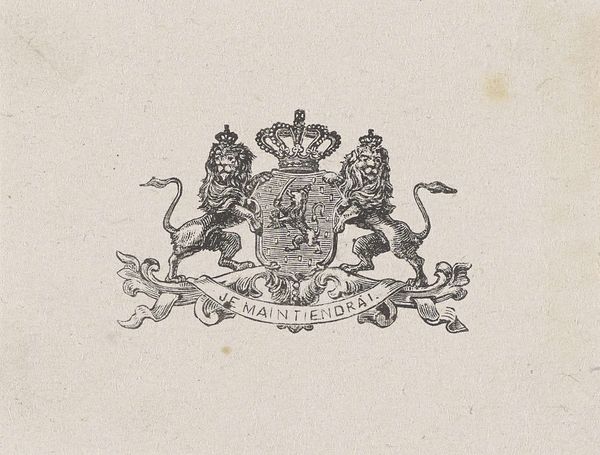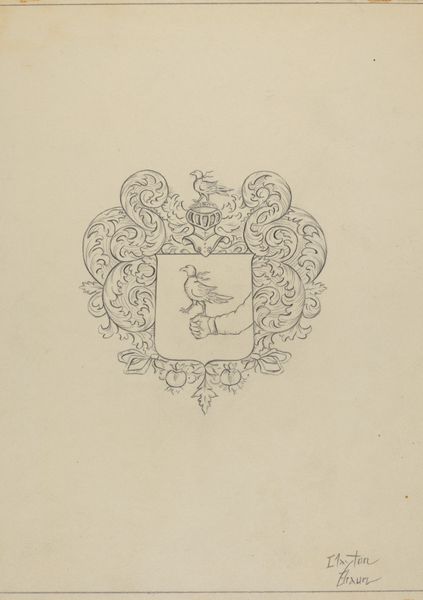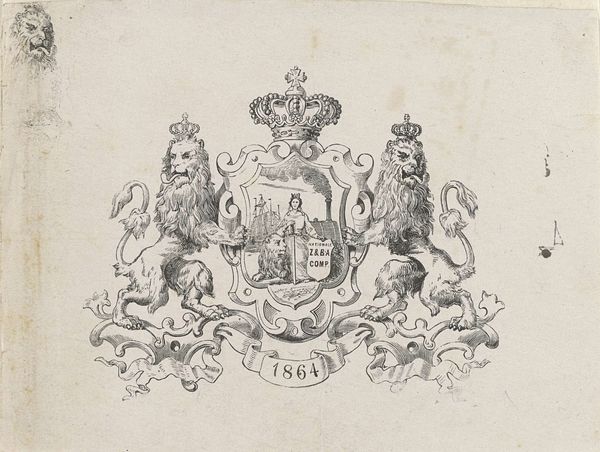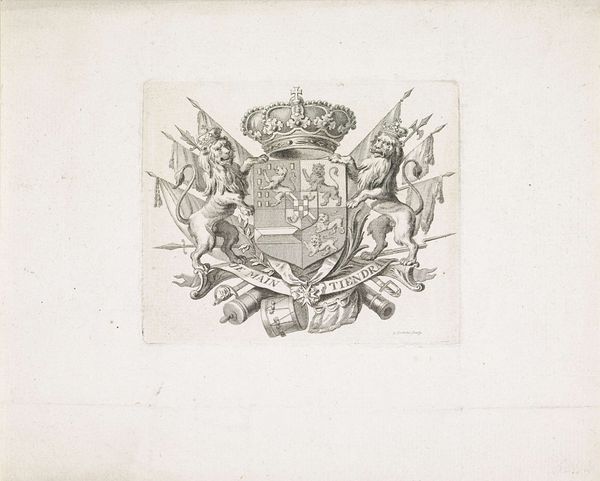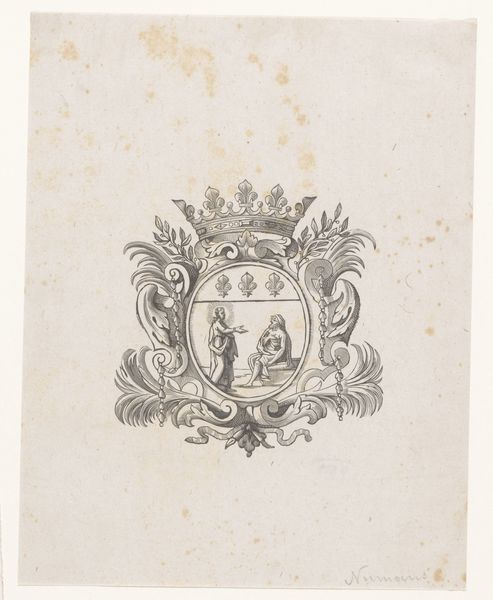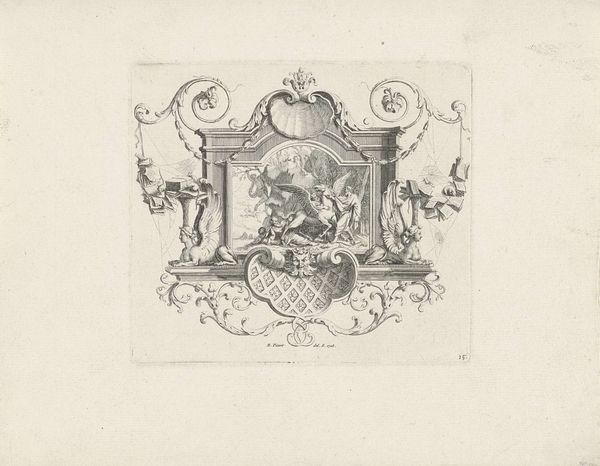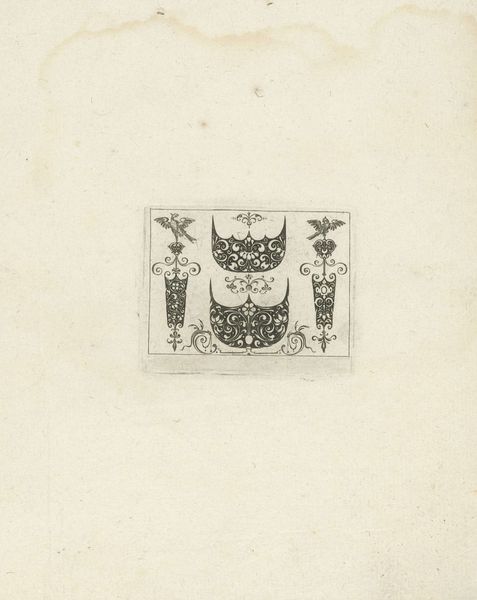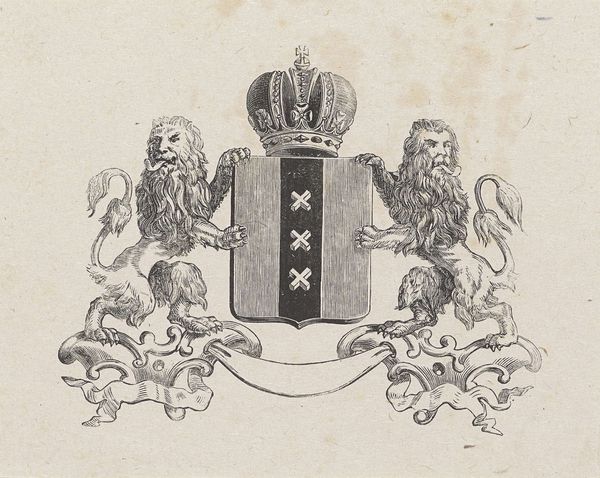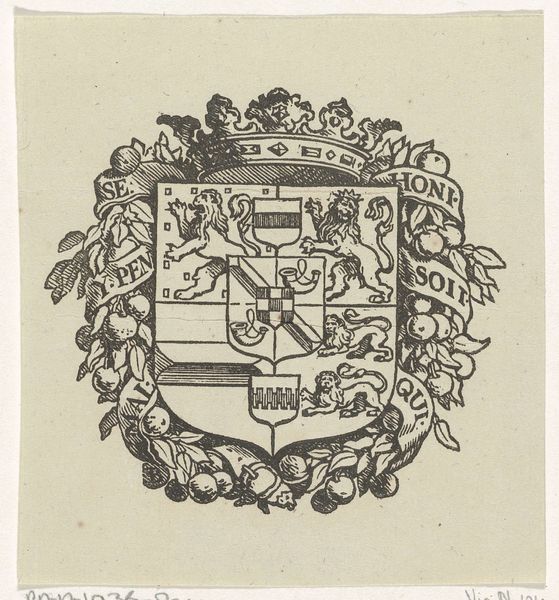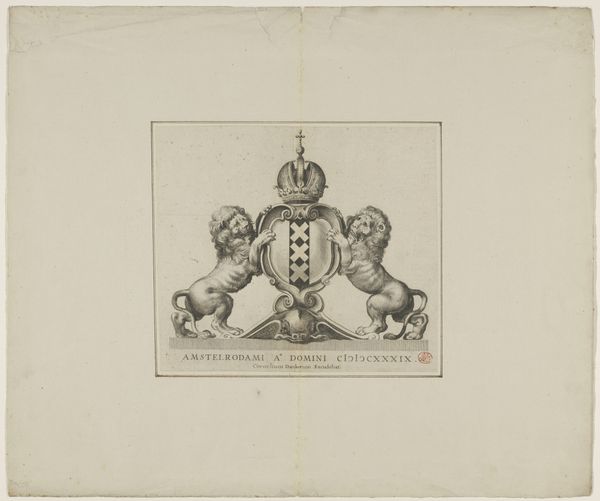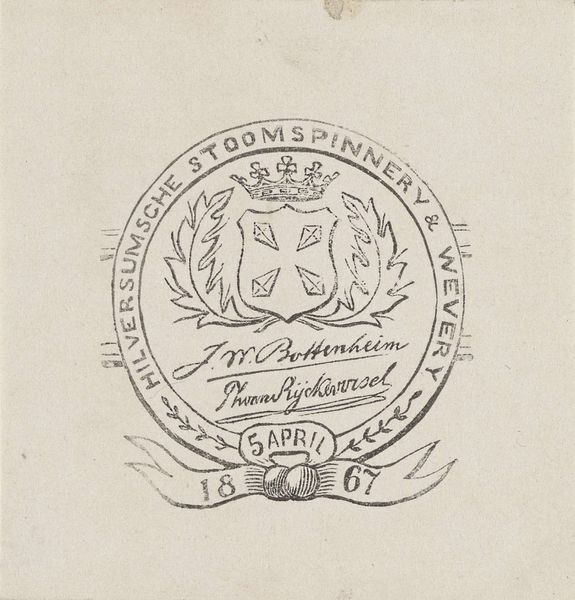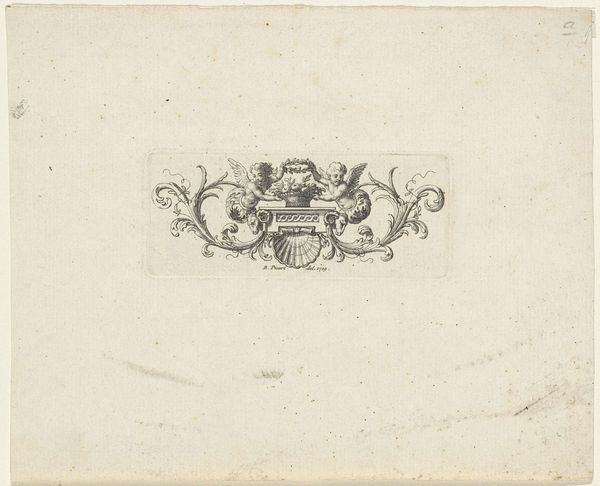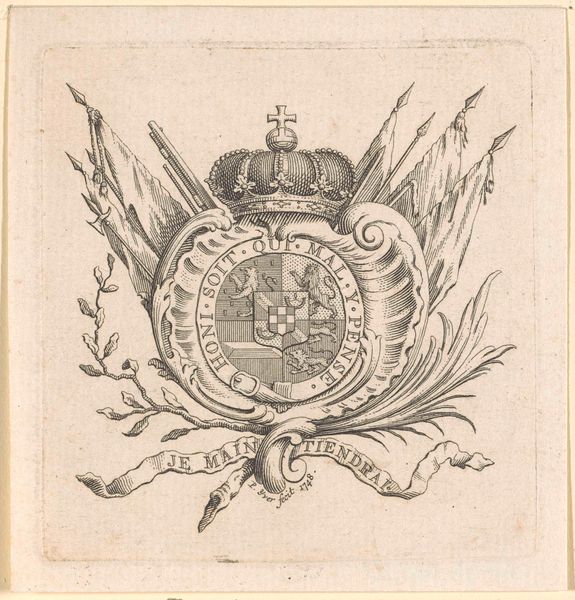
Wapen van Anthonie Willem Hendrik Noltzenius de Man 1817 - 1887
0:00
0:00
graphic-art, print, engraving
#
graphic-art
# print
#
pen sketch
#
pencil sketch
#
old engraving style
#
pen-ink sketch
#
engraving
Dimensions: height 114 mm, width 122 mm
Copyright: Rijks Museum: Open Domain
Frederik Lodewijk Huygens created this coat of arms for Anthonie Willem Hendrik Noltzenius de Man using etching, sometime in the 19th century. Coats of arms are fascinating social objects. They were originally a kind of visual shorthand, useful for identifying individuals, families, and institutions in a largely illiterate society. But over time, as literacy increased, they became important symbols of social status and identity. In the Netherlands in the 19th century, having a coat of arms was a way for families to assert their place in the social hierarchy, distinguishing themselves from the rising merchant class. The lions, crest, and motto are all carefully chosen symbols that tell us something about the values and aspirations of the person or family it represents. It's a reminder that even seemingly simple images can be packed with social meaning. To fully understand the context of this image, we might look into the Noltzenius de Man family history, exploring archives and genealogical records. This coat of arms isn't just a pretty picture; it's a window into the complex social world of the 19th century Netherlands.
Comments
No comments
Be the first to comment and join the conversation on the ultimate creative platform.
